Organize To Pay Your Bills On Time

Photo by Leone Venter on Unsplash
After I wrote Ask Paper Doll: Should I Organize My Space and Time with Color? last week, I got to thinking about how color relates to finance, at least in terms of expressions.
Even though black usually signifies something dire, if you’re “in the black,” it means that you’ve got a net positive income, while finances that are “in the red” are considered bleak, signifying debt greater than revenue.
When you’re “in the pink” you’re in good health, financially or otherwise. And, although it would seem to make more sense that being “in the green” would mean you were flush with money, English lacks that expression. And I’ve learned that in Italian, “Sono al verde,” which literally translates as “I am at the green” means “I’m broke.” Language is funny.
You know what’s not funny? Late payments. Fines for late payments. Increased interest rates because of late payments. Lower FICO scores because of a history of late payments!
During consultations with new organizing clients, people often express frustration over difficulty paying their bills on time. Generally, it’s not that they lack the funds, but that their bill-paying systems get out of whack and fail to fit into their already overstuffed, overburdened schedules. Today, we’re going to look at strategies to get bills paid on time.
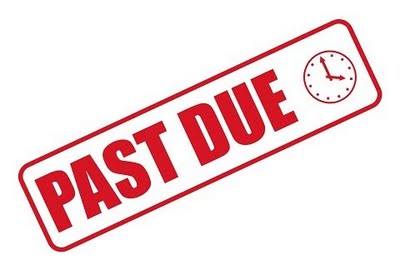
BEYOND THE BUDGET: KNOW THE WHO, WHAT, WHEN, WHERE, AND WHY
You might expect that I’d bring up the topic of a budget. Certainly, knowing all of your financial obligations is important to a smoothly-run financial life. As Charles Dickens said,
Annual income twenty pounds, annual expenditure nineteen six, result happiness. Annual income twenty pounds, annual expenditure twenty pound ought and six, result misery.
Annual income twenty pounds, annual expenditure nineteen six, result happiness. Annual income twenty pounds, annual expenditure twenty pound ought and six, result misery. ~ Charles Dickens Click To TweetIn order to pay your bills on time, it’s essential to know when they are due, and (if applicable) how that relates to when your income will arrive.
Make a chart of all of your creditors and bills. It’s best to do this on a spreadsheet, like Excel or Google Sheets so you can update the chart over time.
- Note when bills are due. Usually, you have three kinds of bills:
- Bills that are due on or around the same date every month (like rent/mortgage, health insurance, utility/cable/internet bills, credit card bills, etc.)
- Bills that are due on a regular cycle but not every month. They may arrive quarterly, like water bills, auto, renter’s, or homeowner’s insurance premiums, or tuition bills, or annually, like professional dues, memberships, or auto registration renewals.
- Bills that a have no regular cycle. These may be one-off bills, like occasional department store credit card purchases or service providers who bill at their convenience, sometimes after you’ve long forgotten about the expense.
- List the amounts or ranges of your regular bills.
- Some of your bills will have the same dollar amount every month, like health insurance or your cell phone bill, because they are regulated by a contract. (These are the ones that for which it is easiest to set up automated payments.)
- Other bills will vary by month due to different usage or consumption, like electric bills or credit card statements.
- List the amounts or ranges of your regular bills.
- Learn and list the penalty of paying late! — My office landline (yes, I said land line!) payment is due on the 28th of the month, but there’s a grace period until the 8th of the following month, at which point the extra fee is about $3. No biggie. However, the average late fee for U.S. credit cards is $36, and that doesn’t take into account that late payments can trigger higher interest rates. If your credit card balance includes a 0% balance transfer, you could lose that rate if you make even one late payment. Oh, and late payments can also wreck your FICO score.
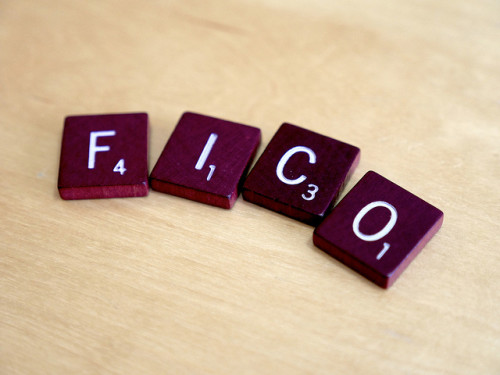
Photo credit: Simon Cunningham under Creative Commons CC By 4.0 Deed
- Make a column for each month of the year so you can mark when you’ve made a payment. This way, you’ll regularly see your progress and recognize when a payment hasn’t been made.
Yes, this sounds like homework, and you may be thinking that if you had the time to do homework in the first place, you’d be able to pay your bills on time.
However, having a sense of how many bills you have, in what amounts, due when, and with what penalty for paying late, can make all the difference in getting your finances in order.
PICK YOUR BILL-PAYING STYLE
No one bill-paying system is necessarily better than the others, but picking a method that works for you will help you stay committed to the process.
Pay Bills the Day They “Arrive”
This simple strategy requires the least amount of advanced planning and you’ll never have to worry that procrastination will lead to late fees.
If you get your bills by mail:
Bring in the mail every day, open the envelopes, toss out extraneous junk and “shiny” advertising material, and pay your bills immediately. Done! (Now log that you’ve paid it on the chart.) People rarely have more than a few bills each day, and if you get in the habit of doing this diligently, it’ll take only a few minutes out of your daily schedule.
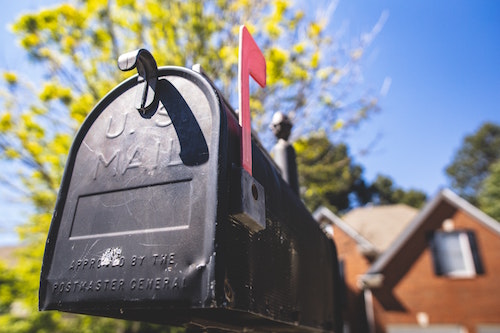
Photo by Abstrakt Xxcellence Studios from Pexels
If you have opted out of paper bills:
Open your email every day, log in (to either your bank’s bill-pay site/app, or the account’s website), pay your bill, and log that you’ve done it. Bing, bang, boom!
Paying bills the day they arrive saves time (because it’s easy to complete quickly), eliminates anxiety regarding whether you may forget to pay, and helps you stick to your budget. If you pay for all of the things for which you have already obligated yourself, you’re less likely to spend on wants before needs.
This is the easiest system, but it’s also the least-often used.
Some people avoid this option because they lack the funds to pay each bill on the day it arrives. If our two biggest bills (for example, mortgage and insurance) arrived on the same day, it might wipe out (or even exceed) our checking account balances. So, there may be a practical reason to skip this method.
But there are far more common reasons why people don’t pay their bills as they arrive.
For some, there are psychological or philosophical obstacles to using this strategy. They may think, for example:
“I’m not going to pay this bill until right before it’s due. They don’t deserve my money one minute earlier than necessary!” [Insert your own “harrumph” as necessary.]
We see this most often when someone wants to avoid paying a credit card bill before the due date. People are fine paying for their electricity or health insurance, because they see that they’re getting the benefit already, so payment feels “fair.” But with credit cards, it’s common to forget that payment was actually due upon purchase; the cards simply shifted the time frame. People forget that a credit card bill is actually an IOU, the debt having been incurred in the past.
If you struggle with this philosophy, there’s still a way to pay bills as they arrive to prevent late payments.
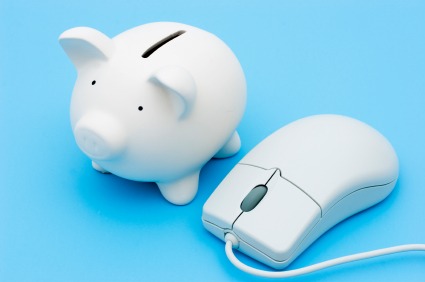
If you pay bills online, log in now but schedule each payment for a day or two before it’s due. (Waiting until the day it’s due can cause holiday/weekend kerfuffles.)
If you pay by check, write out the checks, but put them in your tickler file (see below) or clip them to the calendar page of the date when you’re comfortable mailing them so only that final step remains.
“I don’t like paying my bills in dribs and drabs. I want to pay them all at once.”
This is similar to not wanting to hang up one shirt, or not wanting to file each piece of paper as you finish with it, or not wanting to wash each dish (or put it in the dishwasher) when done eating. It makes sense…until you find yourself with a backlog.
Sure, there’s something to be said for flow, doing a large project once and pushing through it to give your the satisfaction of completing a major task. However, the more we let our clothes pile up on the exercise machine, the more we let our filing pile up in the office, and the more we let the dishes pile up in the sink, the more of a behemoth the task seems, and the more likely we are to procrastinate altogether.
The downside of procrastinating on those tasks are wrinkled clothes, messy offices, and dried-on kitchen yuckiness. The downside of procrastinating on bill-paying? Late fees, increased interest rates, and lowered FICO scores.
Tickle Yourself Organized
If you don’t do something immediately, you have to do it later. Sadly, that’s just one of the laws of physics, that we can’t go back in time. (That said, if you find yourself with a time machine or TARDIS, please let Paper Doll know. I have some experiments I’d like to try.)
Later requires a system, and a system requires both geographic and behavioral changes from what you’ve been doing thus far.

Photo by Nataliya Vaitkevich from Pexels
Geographically, you need a bill-paying center with the following tools:
- Tickler file, or at least a bill-paying folder
- Letter opener (to avoid paper cuts and add pizzazz to opening envelopes)
- Calculator or calculator app
- Pencil and scrap paper (if you have an untenable relationship with calculators)
- Envelopes
- Stamps
- Return address labels
- Non-washable gel-ink pens (to deter identity theft and fraud) to write out checks OR a printer if you prefer computer-generated checks
This assumes you’re getting your bills in the mail and paying them by check. If you’re paying them digitally, you can skip the envelopes, stamps, and return address labels.
The behavioral process is similar to the pay-upon-arrival system. Show up for mail call. (Seriously, I want you to open your mail every day. But if you absolutely won’t, at least put all of your mail in one spot, near your bill-paying area, and commit to opening ALL the mail at least once per a week.)
Open the envelopes, toss out the glossy advertising inserts, and if you pay online, toss the envelopes, too. Even if you’re not going to pay right away, process each bill immediately to keep it from ending up on top of the microwave or mixed in with your third grader’s math homework.
Eyeball each statement to review the charges, note any unexplained fees, and check for new policies and/or errors. (The sooner you catch a billing error or a policy change you don’t like, the easier it is to address.)
Circle or highlight the payment due date. Then figure out how far ahead you want to pay the bill. Take a glance at the calendar to make sure there are no weekends or federal holidays that might cause delivery obstacles.
If the due date is consistently inconvenient (because of when you get paid, or when lots of other bills are due), ask the vendor to change the date to a more convenient one. Many credit cards let you change your due date from inside the account profile.
Once you’ve opened each bill and figured out when you want to pay it, arrange them in chronological order by due date with the one due soonest on top. You can stop here and just tuck the stack in a folder, but longtime readers know that I encourage you to use a tickler file.
I used to tell folks to put the bills in slots at least 7 days in advance of when they’re due, but with the change in postal service delivery speeds, I encourage mailing at least ten days in advance or paying online. Or, make it even easier on yourself and only pay bills one day per week (like Tuesdays), and then just pick a pay date that’s two Tuesdays (or whichever) prior to the due date.

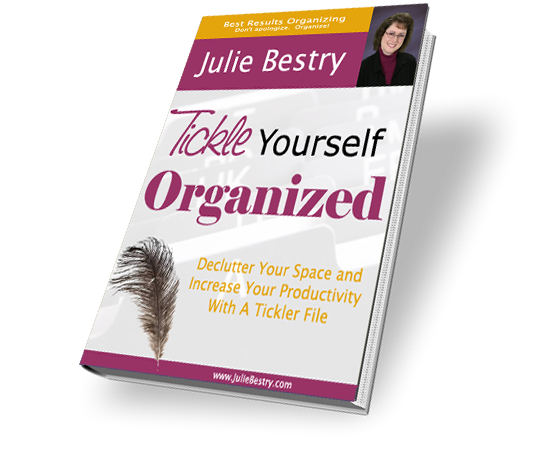
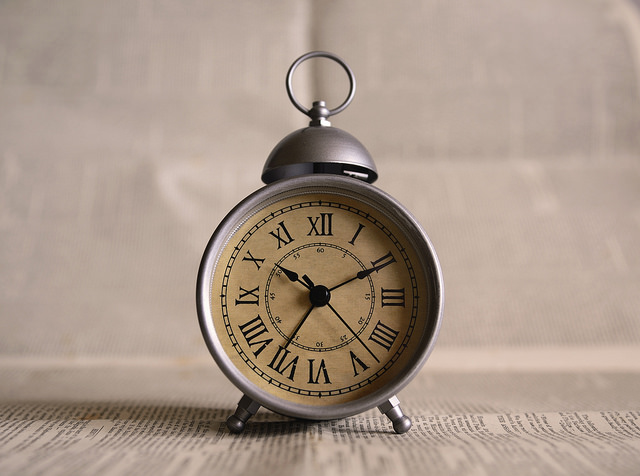




[…] Organize To Pay Your Bills On Time […]
Great tips! I, too, find that it may be an issue if I don’t take care of it right away. So, I have a place where I put things to go through at the end of the day before I finish up. These days, there are only a few paper quarterly bills left but I still write checks. I found that a To Pay Bill folder that is divided by months helps me get through the two billing days I do each month. Having a money management app also keeps me in check.
All great approaches, Sabrina. It took me a long (OK, very long) time to get comfortable with the idea of paying bills online — a fellow NAPO member who specializes in financial organizing convinced me. But I still don’t like automated billing, and except for my cell phone bill (which gives me a discount for doing so), nothing is automated. I prefer paper bills, which I pay digitally; that hybrid approach gives me the control and convenience I need, and while I could do without them, I’ve got credit card payment text reminders set up (because dates became meaningless when COVID struck).
One of the interesting parts of my job has been seeing the various ways that people manage this function. I’ve seen everything from a printed template to a complete lack of any system whatsoever.
I have one client with whom I work on this every time I am there. This is a chronic disorganization situation. It isn’t that the task is difficult, she just needs someone else there to get going. We do the “body doubling” and it works well. That said, I always make her clear the space and get her various needed tools on hand before beginning. I, too, think this really helps!
I completely agree. That “clearing the desk to clear the decks” is really helpful, as is the body doubling. But I’ve had clients where I sorted the bills, checked the odd entries, wrote out the checks (and just had them sign them), and filed the statements. There’s a panorama of needs out there, but as long as someone has a system that gets the bills paid (even if that system is having someone else do it) so be it!
Since we’re among friends, I will admit that I’m one of the people that actually loves paying bills. I think I developed this love from when I was little. On Saturday mornings, I used to hang out with my Dad as he wrote checks and paid the bills. I was his “assistant.” I sealed and stamped the envelopes.
I’ve helped many clients develop and implement bill paying systems. And for some, I’ve done the actual bill paying.
My system is a hybrid- some bills are automatically paid, some I pay online, and very few I write or print an actual paper check. When the snail mail arrives, I take any bills, “unwrap them,” get rid of the ads (as you suggested,) highlight the due date and put them chronologically in the bill paying folder. Then on my 2Do list, I indicate when the next date I need to pay bills is. This way no bills are late, and I’m only paying bills 4-5 times per month and not daily. It works for us. And like any system, that’s the key. Use the system that works.
LOL, friend, I am too! Maybe it’s because I love handling mail and processing paper. But I like helping my clients more because when I’m paying their bills, I’m not spending my own money. 😉
I think we’re all in agreement — whatever system that works for you is the one you’ll commit to, and that’s the key to success!
Great post. I love your sense of humour. I have a fairly good system for online banking. I pay all bills online. I put any new unpaid bills in a email folder called Bills to be paid. Once they are paid I move them to a paid bills email folder. I have a small notepad where I have the bills listed with due dates. Seems to work for me.
Interesting, Kim. And how do you remember to look the folder? What’s your trigger?
I use a mixture of methods to pay my bills – autopay for some, schedule payments for others. It works for me. I have noticed that many of my clients autopay everything. They don’t even look at a statement ever! I wouldn’t be comfortable with that. Thanks for the comprehensive breakdown.
Thanks for reading, Janet. And no, I need to look at every single bill. Even if the dollar value doesn’t change, sometimes the policies do. I like to keep on top of everything.
This line, right here: “…it’s common to forget that payment was actually due upon purchase; the cards simply shifted the time frame.” Plastic really disconnects us from what’s actually happening, doesn’t it? And the online bill paying is really great for some, but there again, there’s a disconnection from the actual exchange of funds. There’s no felt sense like there is when you hand someone a stack of cash. I think everyone under the age of 45 should go back and watch that old Schoolhouse Rock song, “The Check’s in the Mail.” Or even better, I wonder if someone in the fandom would update that song to include credit cards? I’m rambling here. Your post has SO many solid processes, but I really love creating a bill-paying center. We can’t argue with reality – so you might as well create a nice space that supports your interaction with that reality. And how did I not know about “Tickle Yourself Organized”?? Adding that to my reading list now…
I had a feeling you’d recognize the importance of that disconnect, Sara!
And Tickle Yourself Organized was my first ebook; I’ve updated it many times over the past two decades, but it’s my baby.
I love the “bill-paying station” concept for mail-in bills. Having a physical location in your home is great because every time you walk past it you get a little reminder (unless you hide the bill-paying station in your closet!).
I think if you hide your bill-paying station in the closet, it probably means you’re hiding the things you purchased in there, too! 😉
Wow- this is thorough and has so many great ideas to try. If someone reads this blog post and doesn’t solve their bill paying problem, then I don’t know what will! I love that you consider both the underlying problem and the person’s personality and tendencies when it comes to the solutions.
Thank you for your kind words, Jill. I think telling people what to do, without consider why they’re doing what they already do (or why they might have obstacles going forward) is the key to sidestepping those stumbling blocks. Thank you for reading!
I guess we have a hybrid system. My husband manages the business finances, and pays bills as soon as they come in. I manage the household finances, and do all that entails every Friday. It’s working well for us.
It looks like you and your husband found the perfect balance! Thank you for reading and sharing your experience.